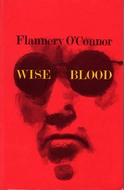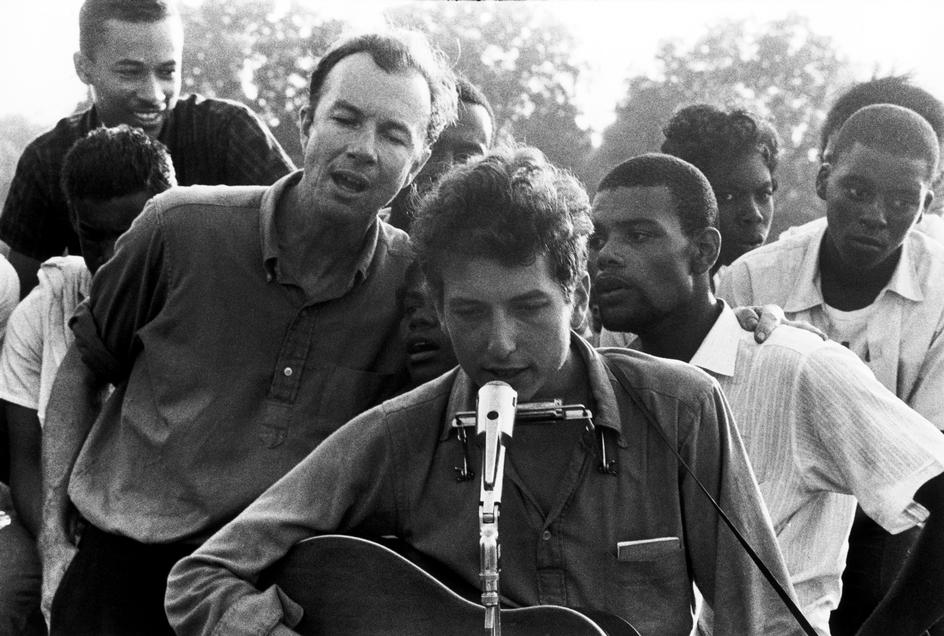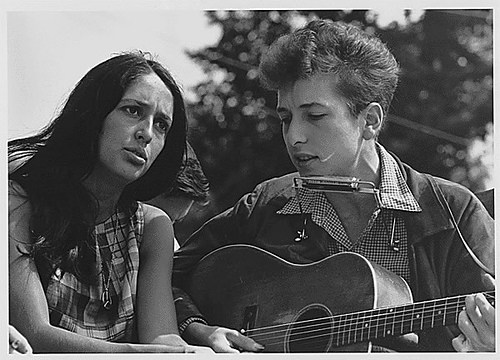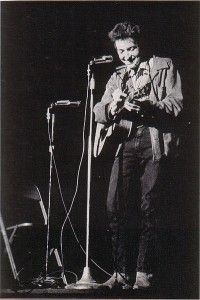Pete Seeger, in 2012, trading bon mots with that “right-wing gun nut” Stephen Colbert. The host is brilliant, as he always is, in using just a few words to trace the history of lefty politics from the folk movement forward.
You are currently browsing articles tagged Bob Dylan.
Tags: Bob Dylan, Pete Seeger, Stephen Colbert
Steve Allen, in 1964, visited by Bob Dylan 1.0, before the singer-songwriter’s fame and the decade itself became a gathering storm.
Tags: Bob Dylan, Steve Allen
From “The Secrets Apple Keeps,” Adam Lashinsky’s new Fortune article about the cultish internal nature of the tech giant:
“Apple employees know something big is afoot when the carpenters appear in their office building. New walls are quickly erected. Doors are added and new security protocols put into place. Windows that once were transparent are now frosted. Other rooms have no windows at all. They are called lockdown rooms: No information goes in or out without a reason.
The hubbub is disconcerting for employees. Quite likely you have no idea what is going on, and it’s not like you’re going to ask. If it hasn’t been disclosed to you, then it’s literally none of your business. What’s more, your badge, which got you into particular areas before the new construction, no longer works in those places. All you can surmise is that a new, highly secretive project is under way, and you are not in the know. End of story.
Secrecy takes two basic forms at Apple — external and internal. There is the obvious kind, the secrecy that Apple uses as a way of keeping its products and practices hidden from competitors and the rest of the outside world. This cloaking device is the easier of the two types for the rank and file to understand because many companies try to keep their innovations under wraps. Internal secrecy, as evidenced by those mysterious walls and off-limits areas, is tougher to stomach. Yet the link between secrecy and productivity is one way that Apple (AAPL) challenges long-held management truths and the notion of transparency as a corporate virtue.
All companies have secrets, of course. The difference is that at Apple everything is a secret.” (Thanks Browser.)
••••••••••
A Rolling Thunder performance of “One Too Many Mornings,” Steve Jobs’ favorite Bob Dylan song. Not even close to Dylan’s best, but to each his own.
“One Too Many Mornings”
Down the street the dogs are barkin’
And the day is a-gettin’ dark
As the night comes in a-fallin’
The dogs’ll lose their bark
An’ the silent night will shatter
From the sounds inside my mind
For I’m one too many mornings
And a thousand miles behind
From the crossroads of my doorstep
My eyes they start to fade
As I turn my head back to the room
Where my love and I have laid
An’ I gaze back to the street
The sidewalk and the sign
And I’m one too many mornings
An’ a thousand miles behind
It’s a restless hungry feeling
That don’t mean no one no good
When ev’rything I’m a-sayin’
You can say it just as good.
You’re right from your side
I’m right from mine
We’re both just one too many mornings
An’ a thousand miles behind
Tags: Adam Lashinsky, Bob Dylan, Steve Jobs
A beautiful passage of the late folkie, Karen Dalton, who was something of a Billie Holiday for the coffee-house set and was sadly plagued by many of the same demons as Lady Day. (Thanks to The Documentarian.)
From the 2007 Guardian article, “The Best Singer You’ve Never Heard Of“: “Dalton turned up in Greenwich Village in the early 60s. She had left behind her husband in Enid, Oklahoma, and arrived with her 12-string guitar, a banjo and at least one of her two children. She began to sing at the pass-the-hat folk venues that were flourishing at the time and played with Bob Dylan, Fred Neil and Richard Tucker. Dylan recalls her as ‘funky, lanky and sultry.’ ‘My favorite singer in the place was Karen Dalton,’ he remembers in Chronicles. ‘Karen had a voice like Billie Holiday’s and played the guitar like Jimmy Reed.'”
Tags: Bob Dylan, Karen Dalton
They were songwriters. One still is. (Thanks Reddit.)
Tags: Bob Dylan, John Lennon
D.A. Pennebaker interviewed about his landmark 1966 Bob Dylan doc, Don’t Look Back, by the legendary music and culture journo Greil Marcus.
From a 1967 Life magazine review of the movie:
Technically, Don’t Look Back is not much above a home movie. Pennebaker uses available light and his sound pick-up equipment seems to be immersed in potato salad, which loses him a lot of dialogue. But Dylan emerges as a human being. He checks himself in the mirror a couple of times, puncturing forever the theory that he is groomed by a Waring blender. He loses his temper. He reads articles about Bob Dylan and giggles. Fans pursue him, a drunk incites him to violent cursing, friends relax him, a pre-concert wait creates tension. He is alone early on stage (the tour antedated the electric accompaniment he uses today), where his voice and soulful images have the power and the beauty to transfix an audience of thousands.•
Tags: Bob Dylan, D.A. Pennebaker, Greil Marcus
In the aftermath of his controversial shift from folk musician to rock star, Bob Dylan took the art of the non-answer to illogical but entertaining extremes during a 1966 Playboy interview, conducted by Nat Hentoff:
“Playboy: Mistake or not, what made you decide to go the rock-‘n’-roll route?
Bob Dylan: Carelessness. I lost my one true love. I started drinking. The first thing I know, I’m in a card game. Then I’m in a crap game. I wake up in a pool hall. Then this big Mexican lady drags me off the table, takes me to Philadelphia. She leaves me alone in her house, and it burns down. I wind up in Phoenix. I get a job as a Chinaman. I start working in a dime store, and move in with a 13-year-old girl. Then this big Mexican lady from Philadelphia comes in and burns the house down. I go down to Dallas. I get a job as a ‘before’ in a Charles Atlas ‘before and after‘ ad. I move in with a delivery boy who can cook fantastic chili and hot dogs. Then this 13-year-old girl from Phoenix comes and burns the house down. The delivery boy – he ain’t so mild: He gives her the knife, and the next thing I know I’m in Omaha. It’s so cold there, by this time I’m robbing my own bicycles and frying my own fish. I stumble onto some luck and get a job as a carburetor out at the hot-rod races every Thursday night. I move in with a high school teacher who also does a little plumbing on the side, who ain’t much to look at, but who’s built a special kind of refrigerator that can turn newspaper into lettuce. Everything’s going good until that delivery boy shows up and tries to knife me. Needless to say, he burned the house down, and I hit the road. The first guy that picked me up asked me if I wanted to be a star. What could I say?
Playboy: And that’s how you became a rock-‘n’-roll singer?
Bob Dylan: No, that’s how I got tuberculosis.”
Tags: Bob Dylan, Nat Hentoff

Milton Glaser was a Fulbright scholar in Bologna.
If he had created only the “I ♥ New York” logo or the multicolored Bob Dylan poster, Milton Glaser would have secured a place in design history. but he’s done so much more in his 80 years, co-founding New York magazine and doing an unbelievable quantity and quality of work in print, environmental and interior design, posters, etc. My single favorite work of his is a rather obscure book cover he created for the Flannery O’Connor novel, Wise Blood.
O’Connor was a master of the short story and this novel never quite reached the level of the three stories she’d written earlier about Hazel Motes and Enoch Emery. But Glaser’s image of a vague thumbprint-ish face under dark glasses is hypnotic and speaks to the book in literal and figurative ways. It’s just about perfect.
Visit Glaser’s official site to see his numerous other designs.
Tags: Bob Dylan, Flannery O'Connor, Milton Glaser





